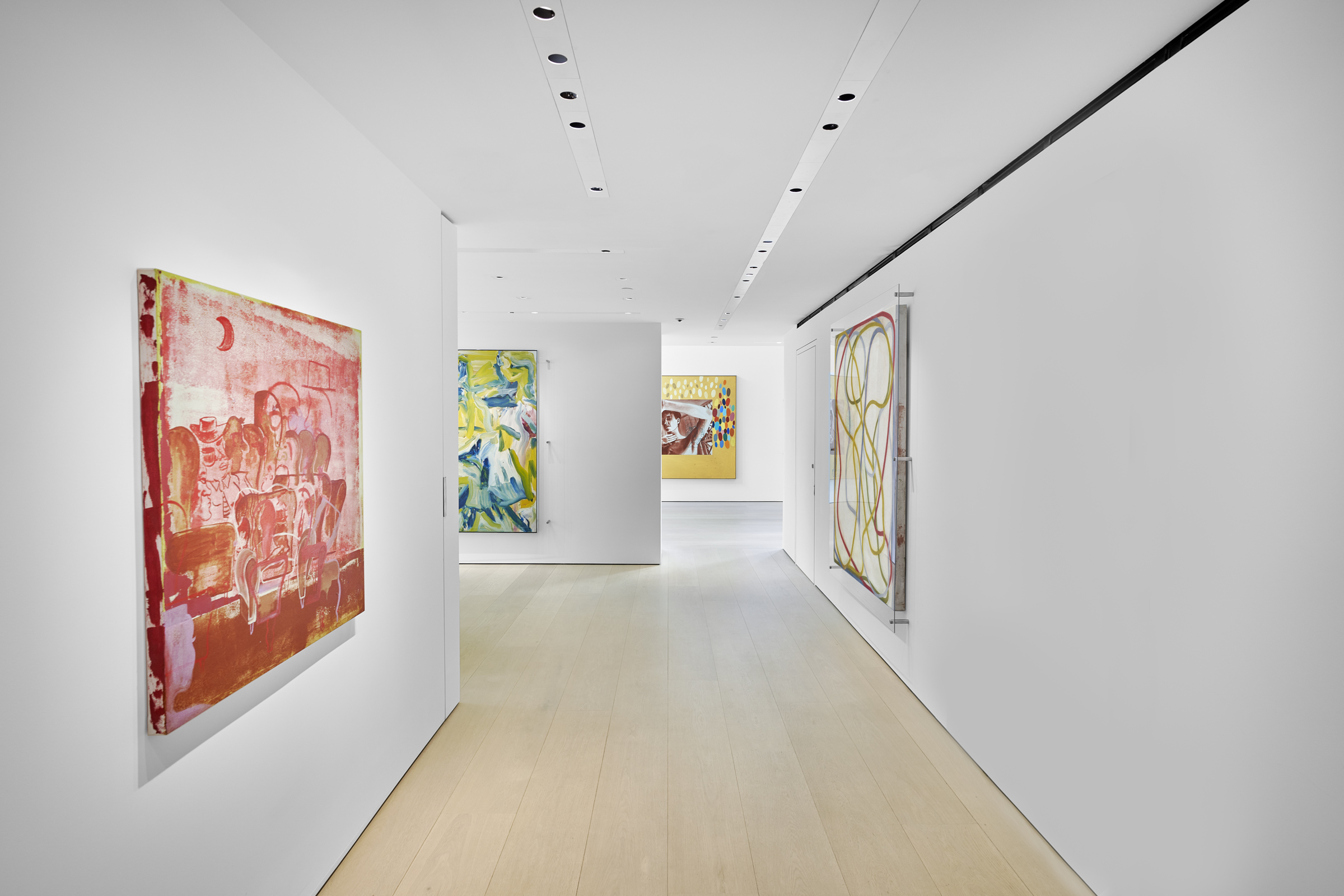Albert Oehlen
Albert Oehlen’s (b. 1954, Krefeld, Germany) oeuvre is a testament to the innate freedom of the creative act. Through expressionist brushwork, surrealist methodology, and self-conscious amateurism he engages with the history of abstract painting, pushing the basic components of abstraction to new extremes.
Oehlen studied at the Hochschule für bildende Künste Hamburg in Germany from 1978 to 1981 and quickly rose to prominence in the Berlin and Cologne art scenes. He came to be associated with the Junge Wilde artists, including Martin Kippenberger and Werner Büttner, who sought to create work that defied categorization and refuted the artistic status quo. Straddling various debates surrounding the nature of painting, Oehlen’s work deconstructed the medium to its constituent elements—color, gesture, motion, and time—and evolved out of constraints he applied to his artistic process. Oehlen is perhaps best known for his embrace of “bad” painting. Alongside his many rules, he allows a certain awkwardness or ugliness to enter his work, introducing unsettling gestures, crudely drawn figures, visceral smears of artificial pigments, bold hues, and flesh tones.
Source: Gagosian



Read More...
Read More...
Air Mail gives their Arts Intel Report review of David Salle’s curation of Beautiful, Vivid, Self-Contained.
Read More...
M.H. Miller reviews Beautiful, Vivid, Self-contained in the April 13th 2023 “T List” newsletter for T Magazine.
Read More...
ARTnews gives a behind-the-scenes look into the curatorial process of Beautiful, Vivid, Self-contained.
Read More...
Artnet publishes an excerpt of David Salle’s essay that he wrote as a part of his curation for Beautiful, Vivid, Self-contained.
Read More...